Links mentioned in the video:
(Text Version Below)
One of the questions I get asked all the time is about which tool should I buy to build guitars? These days there’s a lot of choices and it can be a little confusing. So today I’m excited to tell you about one of my all time favorite guitar making tools, Bar none. It’s this small low angle block plane. It has so many great features that work wonderfully for guitar making and for any kind of woodworking.
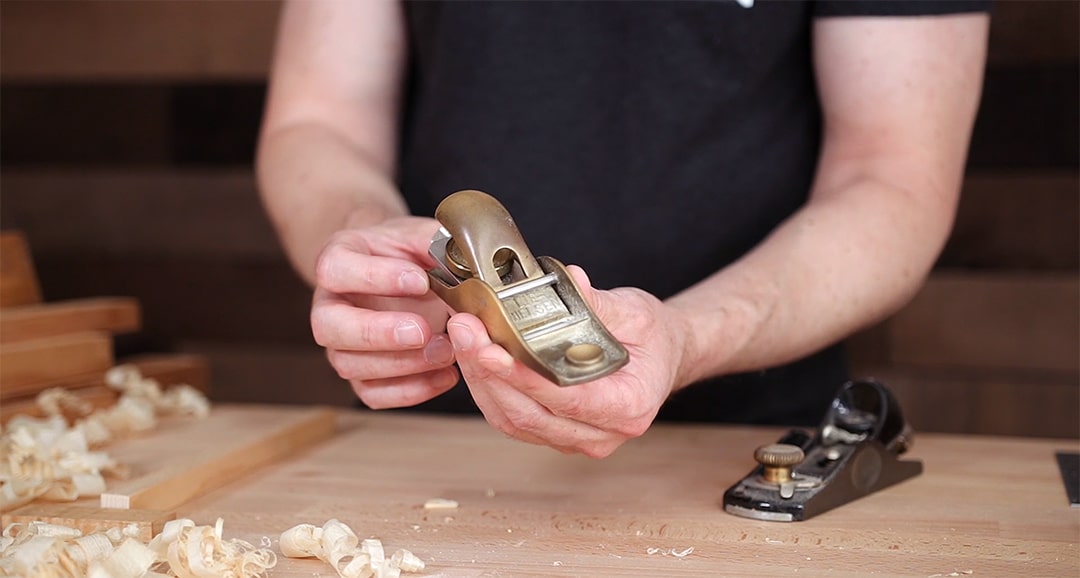
There are a lot of reasons why I love this little plane for making guitars. There are so many things that I would hate to have to do with any tool other than this one. And if you’ve been looking for the perfect small block plane to use for your guitar making, You definitely want to check this out. So I’m glad you’re watching this video. So what I’m going to do is I’m going to show you a clip that that’s taken from one of my online guitar making courses. It’s called The Art Of Splitting Braces by Hand. And I’ll put a link somewhere on this page if you want to know more about that course. I’ve got a video that explains more in depth about what it’s about, why it’s so important, how much it can help you build better guitars and help you improve your lutherie skills as well. You can check out that video HERE
The Lie Nielson #102 Low Angle Block Plane
And so in the clip that I’m going to show you, I’m just going to be going over all the reasons why because I’ve been telling you I like this. It’s my favorite one, but I haven’t told you why yet. So that’s what we’re going to take a look at in this next clip.
So the best tool for the job for me is a small block plane like this. This one is my absolute favorite. This is the Lie Neilson low angle block plane. And it’s just an absolutely amazing little tool. I love it. I mean I use it for just about everything. It’s one of my most used tools. It’s held up really well. I mean, you can see this thing’s got some miles on it. If you go look at what they look like when they’re new, you’ll see how much use this has gotten.
I mean this thing is really worn in, but it’s held up great. I mean it looks, it’s got some visual ware, but the functionality of it is absolutely perfect like it was the day I got it.
Aside from the really sturdy build and the great blade and things like that, what I really love is the size and the weight. It’s just absolutely perfect for carving these tone bars. I use it for headstocks. I use it for everything. The other thing that’s really special about this particular plane is that it’s a low angle, so the blade is down on a pretty low angle and so I find that the combination of the low angle mixed with a technique where I sort of turn it on a little bit of an angle and sort do a slicing kind of cut on the wood. I can cut through flame maple and things relatively well, not perfect always, but with less tear out than you can get with a standard block plane.
So if you have the opportunity to get one of these, I highly recommend it. It’s one of my favorite tools and probably my most, one of my most highly recommended tools for guitar making. It’s just a real pleasure and you’ll be able to pass it onto your kids someday. By the way, I’m not endorsed by them or anything, so just so you know, this is just a plain old, I love it endorsement kind of thing. So the palm rest is so comfortable too, just love it. And I’m going to demonstrate this in a second some more, but I just wanted to sort of highlight this because it’s important.
Other Block Plane Options
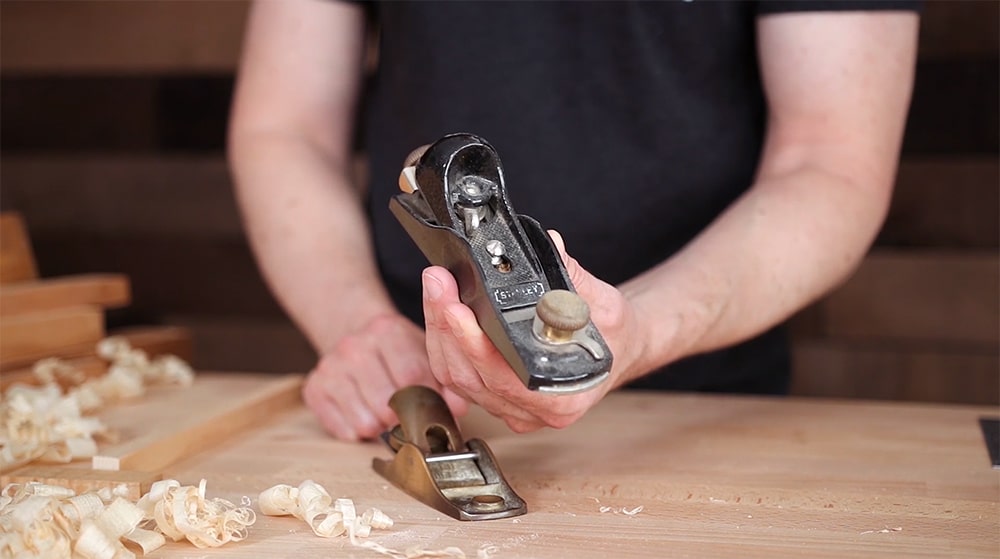
Now you can use a regular block plain like this. I started out with this, which was a real cheap Stanley one you just buy from regular hardware store and get your blade nice and sharp and this will take you a long way. There’s a lot you can do with it. No tool is perfect and they all have idiosyncrasies that have to be overcome. So keep that in mind. If you can only get in this one for now, do it, master it and learn how to use it. You’ll be that much more prepared. And get to enjoy this one that much more when you eventually get this one. By now you probably understand why there’s wood shavings all over my work bench and it’s a big mess and hopefully you get a little more insight into why I like this plane so much. It’s important to remember that no tool is perfect.
What Is the Best Block Plane For You?
The goal is to figure out which tool matches you and your style and helps you do your best work and brings you joy. Really. I mean, at the end of the day, we want to have fun making guitars. We want to do our best work, we want to have fun doing it. And I think sometimes people forget that fun part. So keep that in mind as you check out this tool or any other tool.
I hope you found this video helpful. Just for fun, I’m going to play the trailer of that course that I took the clip from in case you want to check that out. It’s a kind of a fun trailer to watch, so hopefully you’ll stick around and look at that. And that’s it. If you’re not a subscriber of The Art Of Lutherie YouTube Channel, hit the subscribe button and all that stuff, and thanks for watching again. See you in the next video.

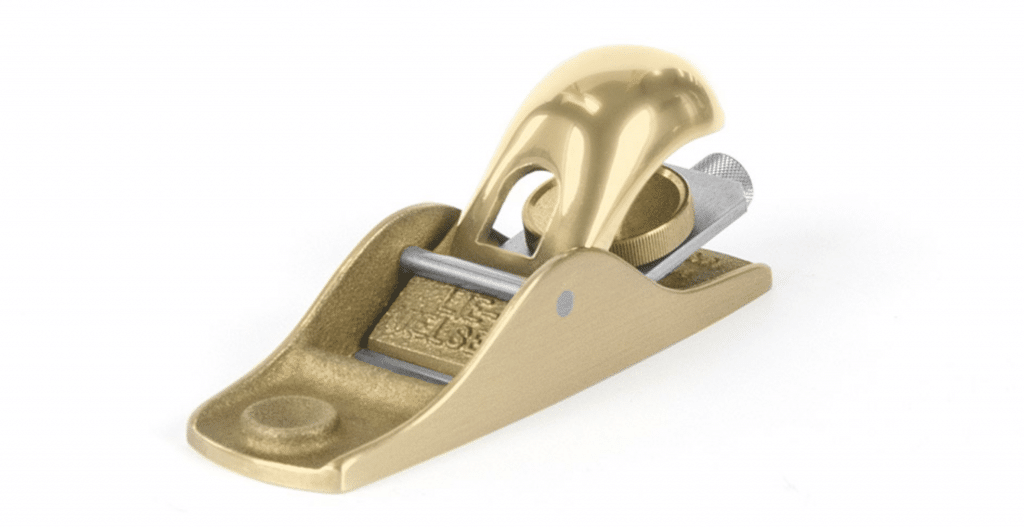
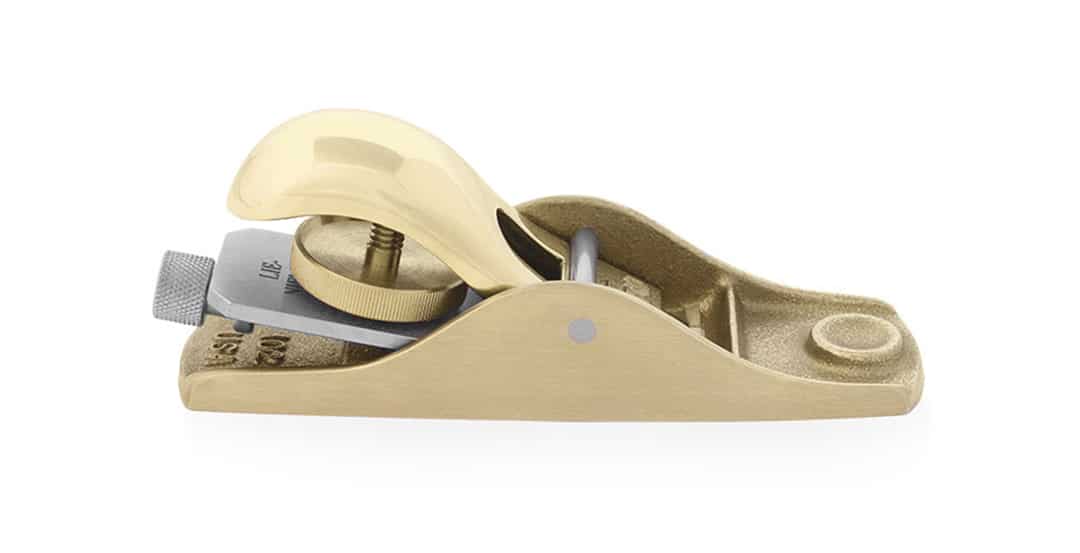




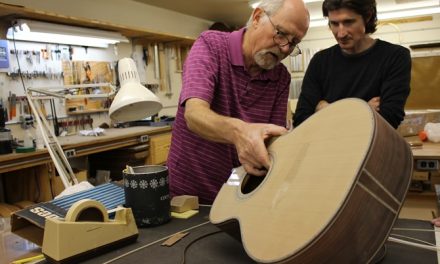
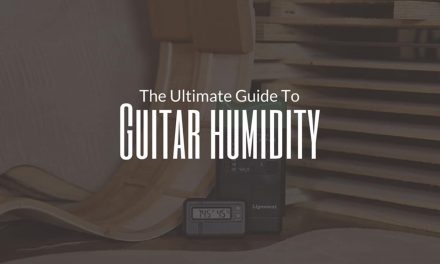
I might be going back to school on government scholarship. Luthier is one of the four paths I am considering. I have always been fascinated by the fact that, when crafted correctly, wood can naturally amplify sound waves and in such beautifully clear tones. I love the science, simplicity, and beauty of instruments, particularly those made from wood. Is there a specific school, program, or route that you would recommend as the best way to learn the skills of a Luthier and how to get into the field?
Hi Jim, Learning to build guitars seems to be a different and unique journey for each person. For me I didn’t have many options at first, so I did the best I could with a instructional book and made a deal to use tools from a local guitar repair guy. I did end up traveling to study later on in person but no matter what type of training I had there was always a moment when I got back to my workshop and realized I was facing yet another variable that I didn’t know how to deal with. As time went on I discovered that the key was not just learning the steps or someone else’s process, but rather learning “why” or the underlying core principles that become the foundation of everything you face and every choice you make. That’s one reason why I created the Luthier’s EDGE, so that luthiers would always have a place to learn the core concepts, steps, and find some help when they feel stuck or overwhelmed so they could grow faster and do better work on their guitars. So I guess what I am saying is that you should do the best you can and find what training and resource are available to you to get started. In order to get the most out of the training you do have, I highly recommend adding the Luthier’s EDGE along with that to give you that extra edge and help when you need it most. Here’s a link if you want to learn more about it: The Luthier’s EDGE – Online Luthier School